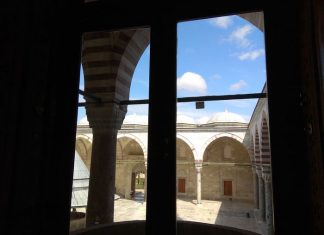Distinct from the admission of images is the question of the way they are treated. What signs of reverence, if any, did the first Christians give to the images in their catacombs and churches? For the first period we have no information.
There are so few references to images at all in the earliest Christian literature that we should hardly have suspected their ubiquitous presence were they not actually there in the catacombs as the most convincing argument. But these catacomb paintings tell us nothing about how they were treated.
We may take it for granted, on the one hand, that the first Christians understood quite well that paintings may not have any share in the adoration due to God alone. Their monotheism, their insistence on the fact that they serve only one almighty unseen God, their horror of the idolatry of their neighbours, the torture and death that their martyrs suffered rather than lay a grain of incense before the statue of the emperor’s numen are enough to convince us that they were not setting up rows of idols of their own.
The person of Ceesar
On the other hand, the place of honour they give to their symbols and pictures, the care with which they decorate them argue that they treated representations of their most sacred beliefs with at least decent reverence. It is from this reverence that the whole tradition of venerating holy images gradually and naturally developed. After the time of Constantine it is still mainly by conjecture that we are able to deduce the way these images were treated. The etiquette of the Byzantine court gradually evolved elaborate forms of respect, not only for the person of Ceesar but even for his statues and symbols.
Philostorgius (who was an Iconoclast long before the eighth century) says that in the fourth century the Christian Roman citizens in the East offered gifts, incense, and even prayers, to the statues of the emperor (Hist. eccl., II, 17). It would be natural that people who bowed to, kissed, incensed the imperial eagles and images of Caesar (with no suspicion of anything like idolatry), who paid elaborate reverence to an empty throne as his symbol, should give the same signs to the cross, the images of Christ, and the altar. So in the first Byzantine centuries there grew up traditions of respect that gradually became fixed, as does all ceremonial. Such practices spread in some measure to Rome and the West, but their home was the Court at Constantinople.
Read More about John of Damascus part 34








